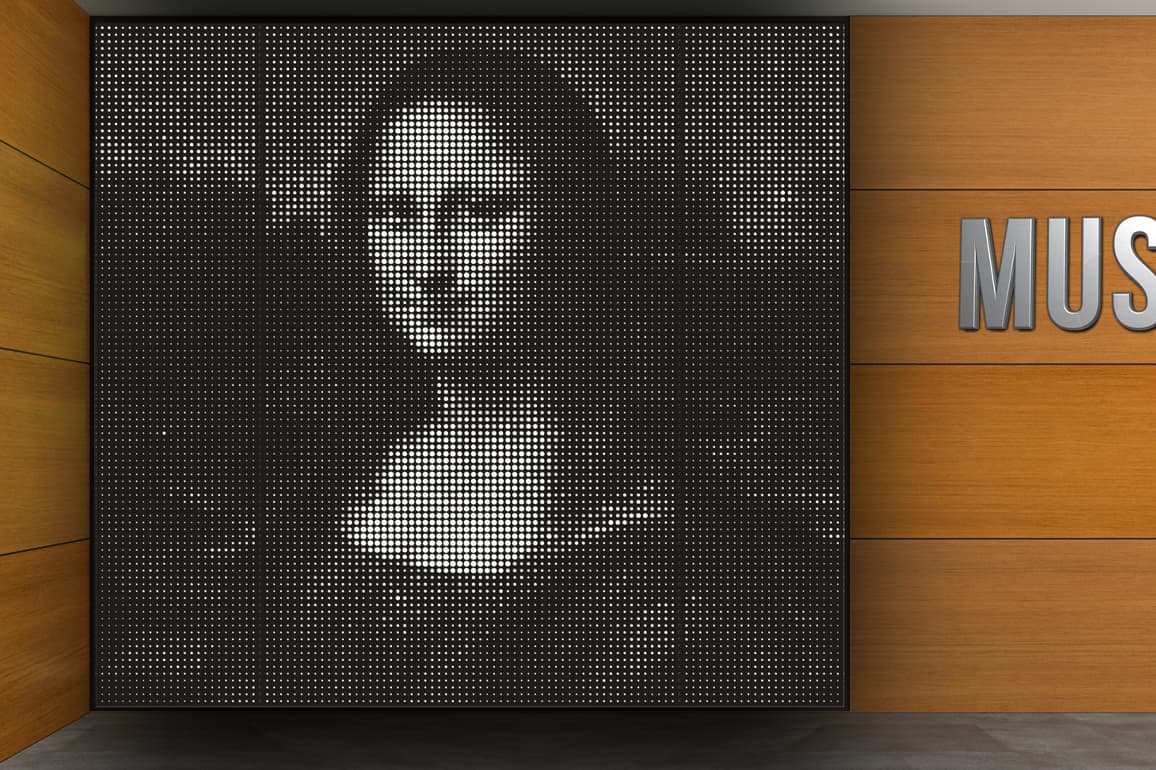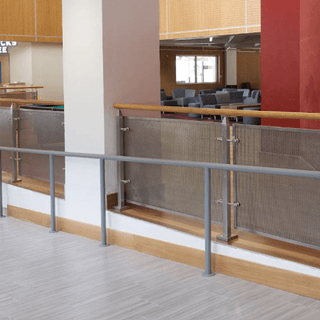Choosing the right stair and ramp railings requires making a number of decisions related to the type and style, but it also requires choosing a mounting option. There are four main mounting options for stair railing mounts:
- Fascia mounted
- Top mounted
- Core mounted
- Base shoe mounted
Many of our systems can be mounted in multiple ways in order to fit your design needs and aesthetic. But each mounting option comes with different installation and cost requirements, so it’s important to understand the differences when evaluating your railing needs.
Fascia Mounted
Fascia hand railing mounts systems are attached to the side of the stairway, ramp, walkway, or balcony where there is typically a strip of wood or metal trim. This is an ideal mounting option where the design needs to maximize the amount of usable space as it creates the most amount of space between the railings.
Our VIEWTM Glass Railing System in particular is a good example of a fascia mounted system and its advantages. The mounting hardware can act as a design element in its own right, adding interest and depth to the stair or ramps side profile. A fascia mounted system can also be used to maximize available walking space and views. One additional consideration when choosing a fascia mounted system, however, is cost. Because of the work needed to access the side of the stairway, fascia mounted systems will likely be more expensive to install than other systems.
Top Mount
Top, or surface, mounted handrails feature posts that are installed directly on the walking surface. This is one of the more common types of railing mounts as it is the easiest to install. Top mounted handrails will likely be the most cost-effective options as there will be less preparation needed as opposed to core mounted, and the installation professionals can work directly on the surface rather than needing to access the side as with fascia mounted railings or drill into the surface as with core mounted options.
While they are more common than other types, top mounted railing systems can still add aesthetic value to the design while meeting building code requirements for support. The VISIOTM Glass Railing System, for example, takes a different approach to mounting the tempered glass infill panels. Rather than mounting the glass to posts or to the side of the structure, this system uses glass clips to support the glass panels. This system can be top mounted, as seen above, or facia mounted.
Though top mounted railing systems are often more cost effective than other options, a disadvantage to this mounting style is that the railing system will take up some of the walking area, narrowing the space between the handrails on either side of the stairway or ramp.
Core Mounted
Core mounting creates the most stability as the posts are sunk into the surface. They may also be referred to as embedded railings. In the case of this project at the George W. Bush Elementary School, the CIRCA Wire Mesh Railing System features posts that are installed into the edge of the stairway to provide unparalleled support for the young students who travel the stairs each day.
Because of the labor involved in creating the space in which the post will rest, this is typically a more expensive option than top mounted systems. But it also creates a seamless look with the uninterrupted transition from the mounting surface to the posts.
Shoe Mount
Shoe mounted railing systems also provide a high level of stability as the base shoe, or boot, eliminates the need for posts and clamps on to the glass panels to secure them. Our patented compression set allows for flexible installation and a streamlined aesthetic. We also partnered with SIKA Corporation to design a Waterproof Shoe System for applications where moisture is a consideration.
Cost Requirements
At VIVA Railings, the cost to install our systems will vary based on a number of factors, including the system itself, the size and scope of the project, and customization options. That said, our systems fall into this spectrum:



